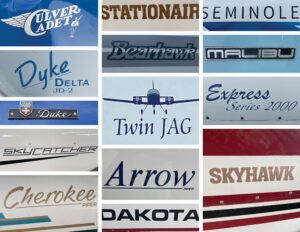
My name is Myron. In my life, I’ve personally met very few Myrons, and my father was a third of them. Once in my airline career, I happened upon an aircraft fueler who had the name “Mo” embroidered on his overalls. When I asked him if Mo was short for something, he sheepishly said that Myron was his real name, but if my name were Myron, I’d go by something else too. I showed him my ID badge, and we both had a nervous laugh, and then I walked away, needing a moment to myself. In Spanish, Myron is pronounced mee-róne, which means someone who stares at others in a creepy leery way. When I lived in South America, little kids would laugh, then run and hide.
I don’t profess to be an expert on much of anything, so I try to approach writing about things from the perspective of the average schmo. However, when it comes to the existentially deep aspect of proper names, any Myron can write volumes on the topic. (No offense to any Myrons in Readerville. Both of you.)
Animal House
Throughout history, aircraft of all types have had an interesting and varied relationship with proper names in addition to their more common alpha-numeric designation. Aircraft were either endowed with names at the design stage or, for better or worse, nicknamed something along the way that just stuck. Almost any proper name was fair game—designer’s names, hometowns and so on. Bird names are an obvious choice, and many, like Eagle and Hawk, have been used numerous times. However, any fauna can do. Fish (Tigershark), reptiles (Cobra) and just about every mammal except elephants. To my surprise, there actually was an aircraft named Hippo. Some animal-based aircraft names are real, and others are made up like Bearcat or Bearhawk. Speaking of cats, the name “cat” itself, usually in conjunction with another descriptor or various types of big game cats, have been popular. Curiously, I can’t think of a single example of a dog being used, although Wolf, Coyote and even Kitfox represent canines in general. I guess people don’t want to have to confess that their airplane is a dog. Go figure.
Star is another name that has appeared as either a prefix or suffix in dozens of aircraft names, and I’m not sure why as airplanes aren’t designed to go to space, although the F-104 Starfighter came awfully close.
I am amazed at how many aircraft have been named Albatross in various versions and languages—aircraft probably named by the factory’s overworked accounting department.
The naming of aircraft most likely gained traction as aircraft became weapons of war. The British, in particular, had a penchant for naming their aircraft, some of which became iconic over time and others a bit silly. Sopwith Camel makes little sense but endures with odd charm. Spitfire, like its Yankee cousin Mustang, will go down in history among the most famous names and aircraft ever conceived. On the other hand, Zero may be generally regarded as a fine (early) fighter design, but its name is a head-scratcher unless as a descriptor for how many world wars it won.
Most military aircraft names are intended to seem fearsome to an enemy, although the Boeing P-26 Peashooter and the DeHavilland Dormouse didn’t seem to get that memo. At least one model, the Fairchild-Republic A-10, got an official name Thunderbolt that was soon supplanted by its better-known name Warthog. (As an aside, having flown for over 35 years with military pilots going back to the Korean conflict, the A-10 pilots always had the most exciting war stories to tell.)
Some military aircraft had model names like the B-17’s Flying Fortress and at the same time had individual names like Memphis Belle and Sentimental Journey. My father, a self-taught artist with a special talent for painting scantily clad women, actually served part of WW-II on a then top-secret mission to send actual artists to airbases to convince the world that every crew chief was also a talented artist. They would paint or fix the nose art and then stand aside while the crew chief signed it and posed for photos. Funny how few have ever questioned that logic. He met my mother in England, who was working at the time (between bomb runs) in a factory soldering radios for Lancaster bombers. They met, married and honeymooned all in the first month, and they were separated by the war for two years. God bless that generation and all they did for the rest of us.
Peacetime Monikers
After the war, a lot of airliners got into the naming convention act. Lockheed was a fan, and the Constellation—aka Connie—was one of the most famous. They followed up with names like Tri-Star and Electra, the latter a name they liked so much they named two very different models with it.
No offense to the British or the designers of the Comet or Meteor, but I can’t imagine why anyone would name a new aircraft design after a flaming mass searching for a place to crash.
Boeing took their B-29 Superfortress and turned it into the 337 Stratocruiser with little sales success to show for it. Boeing then abandoned proper names for airliners for several generations of semi-consecutive numeric designations involving the number 7, up until the proposed Sonic Cruiser that never got off the ground and then the Boeing B-787 Dreamliner, which obviously did.
Civilian general aviation manufacturers often liked bestowing names upon their products. Cessna endowed names upon many but not all of their products. Skyhawk, Skywagon and Skylane have served brilliantly. Commuter for a trainer was a miss, in my opinion. The big piston twins Skyknight, Chancellor and Golden Eagle got names. Even the smaller Crusader got tagged, but curiously, the C-340 (my favorite of the genre) did not.
Piper got a very early start with the uber-iconic Cub. They later launched into their Native American series: Apache, Archer, Cherokee, Comanche, Navajo and so on. Tomahawk was a strange name for a trainer, considering the flight characteristics of the weapon when tossed combined with the early stall/spin characteristics of the namesake, which when mixed with the prevalent gallows humor of CFIs resulted in the common invective of “Traumahawk” until the model was discontinued.
While the whole Piper predilection of using Native American themes was likely orchestrated with the noblest of intentions at its post-war inception, such a marketing ploy today would likely be considered improper if not offensive. Some things change. Some things don’t.
Beechcraft had some iconic monikers. Staggerwing and, of course, Bonanza, but then went through an interesting period of following a “royal” naming convention including King Air, Queen Air, Duke, Baron and Duchess before abandoning the format (or running out of names) when it came to Skipper, Sierra and Sundowner.
Grumman went with big cats for their Cougar, Tiger and Cheetah series. While they’re all considered quick, they curiously reversed the speed of the feline in relation to the speed of the respective aircraft model. When it came to the trainer, however, they dug down deep and named it Trainer. Shack!
Mooney started early with proper names such as Executive, Ranger and Chaparral. They then changed to a speed-based numerical designation for a generation with the 201, 231 and 252 models before trying out alpha acronyms like TLS and MSE, before revolving full scale back to proper names like Ovation, Bravo and the oft-used Eagle.
Where Do These Come From?
Who knows who comes up with these names and themes? I suspect some were internal, and some contracted out to supposed experts who make their living conjuring up such things. I wonder if the designers of the LearJet, BeechJet, CitationJet, PiperJet and HondaJet paid big bucks to the same Madison Avenue namecaster. If so, they could have phoned it in and laughed all the way to the bank.
So what about the Experimental universe? Early classics commonly had proper names such as Air Camper, Tailwind, Falco and VariEze. There are dozens of others. Newer names like Velocity, Bearhawk, Kitfox, Moose and Mako are making a name and reputation for themselves.
While it seems like the majority of E/A-B model kit offerings employ a proper name in their marketing strategy, curiously, Van’s Aircraft, the industry volume leader by far, does not. For decades, Van’s has eschewed proper names for its models, following instead a simple semi-chronological numeric model designation scheme that no doubt cost them nothing to conceive. I say “semi-chronological” because of notable gaps in the list that may or may not be filled someday. The process has been so successful within the industry and community that one of us can hear “they have a ten” or “working on an eight” and immediately recognize the subject matter. Brilliant.
Take It From a Myron
Far be it for me to instruct Van’s on how to improve their phenomenally successful business formula. However, should they ever decide to attach a proper name to a project, I humbly believe that I have envisioned a perfect one, and it won’t cost them anything more than a nice polo shirt, size L, for me to bestow upon them its full rights of usage. It’s a name that, unlike the ubiquitous Eagle and the like, hasn’t been employed in aviation yet (officially at least, but there is certainly incentive to jump on it quickly). My suggestion is a nom de guerre that invokes speed and mystique with a dash of suspense and secrecy in development, along with an homage to origin.
I would love nothing more than a front-row seat to the official unveiling: Ladies and Gentlemen, Van’s Aircraft is pleased to present to you our latest offering, the incredible RV-XX Aurora.
Aurora certainly ain’t no Myron of a name, but they’ve probably already considered and rejected it. One can still dream.









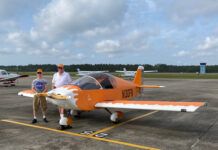

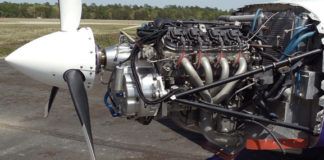
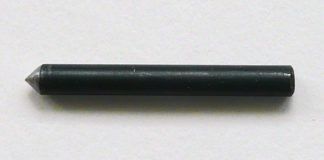
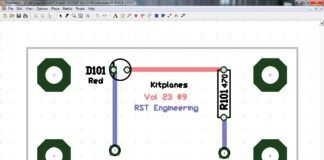
What a fun article. Well done Mr. Nelson
A couple of years before Lockheed introduced to the world their magnificent Hercules the Poms launched their version of cargo transport in the form of the Blackburn Beverley. Gotta love an aircraft called Beverley. Great article thanks Myron.
Sorry Myron, but the Canadian armed forces use an Aurora for maritime patrol.Just a fancy name for the Lockheed Electra, one of the sturdier truboprops ever made. Vans could do far worse than naming the next plane an Aurora! Aka Northern lights!!,
Thanks for the update Abe. Lucky for me, nobody pays any attention to Canadian aerospace.
JUST KIDDING! I love big burly rivets.
I’ll take solace in the fact that it was a rebranding of a an original factory moniker that in its own right proves the airworthiness of the name choice.
Thanks for reading and reaching out.
American Champion also made an Aurora, which I believe was basically a Decathlon. (Not a bad name, either.)